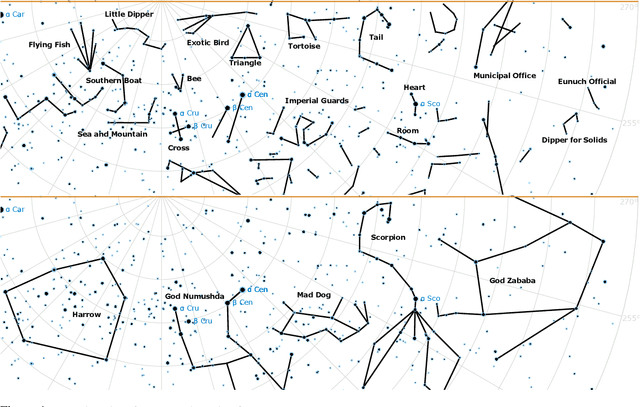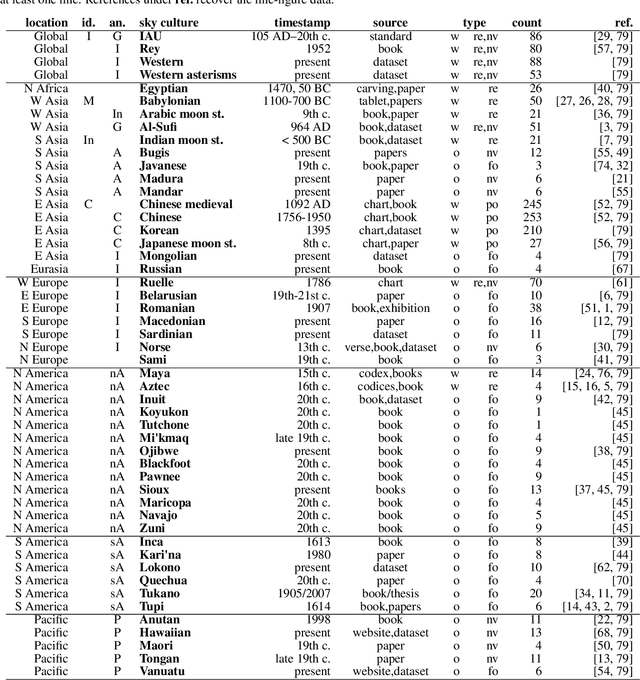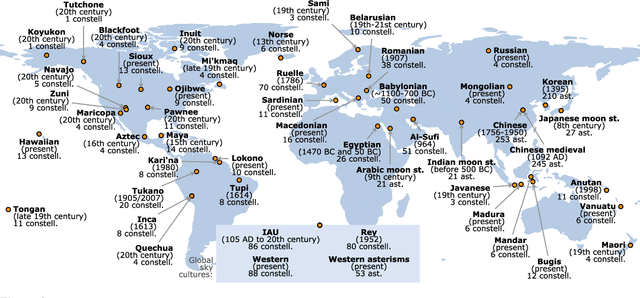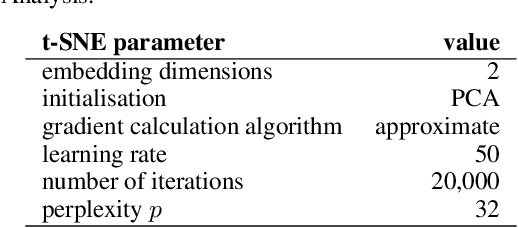The network signature of constellation line figures
Paper and Code
Oct 19, 2021



In traditional astronomies across the world, groups of stars in the night sky were linked into constellations -- symbolic representations on the celestial sphere, rich in meaning and with practical roles. In cultures where line or connect-the-dot figures were documented, these visual representations are constrained to the fixed background of stars, but are free in their choice of stars and lines to draw. Over a dataset of 1591 constellation line figures from 50 astronomical cultures, we define metrics to measure the visual signature (or complexity) of a constellation, and answer two questions: (1) does the type of culture associate with the visual signature of constellations? 2) does the sky region associate with the visual signature of constellations? We find that (1) individual cultures are only rarely and weakly thus associated, but the type of culture (by practical use, level of development, and ancestry) show an association. We find clear clusters of cross-culture and cross-type similarity in visual signatures, with SE Asian traditions far apart from Mesopotamian, N and S American, Austronesian and Polynesian traditions, which are similar. We also find (2) more diversity of constellation signature per sky region than expected, with diverse designs around the majority of popular stars.
 Add to Chrome
Add to Chrome Add to Firefox
Add to Firefox Add to Edge
Add to Edge